Nature and the universe
The olive harvest in Arsita
The leafy branch that remains
“Pick the olives and pick the wild olives, pick the olives and the leafy branches are left”. This is the beginning of a song for the olive harvest, called “a cojë la livë” (olive picking) in Arsita and throughout the agricultural community in the Abruzzo farmland. Women’s voices chanted in turn, one after another, the melody that accompanied the manual work, with ladders and small rakes, in the silence of the autumn countryside. The compressed air olive harvesters now dominate the contemporary soundscape, relegating the singing to a domestic and private dimension of remembrance and memory.
“We used to sing when we were at work…the olives, the olive trees, the large trees, they have lots of branches to climb on, there may be also three, four women, we picked them by hand, pulled them and put them in a small basket that you carried in front of you, the olives went down in there, but many times they fell to the ground, and then you had to pick them up ”.
Adele Di Marcoberardino, October 19th 2017
The olive harvest is the culmination of the agricultural year, traditionally accompanied by long and nostalgic songs, in the autumn setting moving towards the winter season: it is infused with the solemnity and drama of the last harvest, the end of a cycle, entwined with the month dedicated to the dead.
Olive oil and olive leaves are also an essential part of the Christian-Catholic liturgy, mainly linked to the Easter period, and of many magical-religious and therapeutic practices deriving from the popular local medicine. Oil has been used for centuries to predict and foil envy, and there were practices of rubbing rituals to heal the sick parts of the body; the blessed leaves of the olive tree, if burned, were used to keep away the evil eye and protect children.
The cultivation of the olive tree has always been a protagonist of the agricultural economy of the valleys in the eastern part of the Gran Sasso, firmly established from the coast to the foothills, where it climbs up to 600 metres above sea level, the altitude limit in terms of the ability of the plant to resist to the cold. In Arsita, a town in the High Valley of the Fino situated in a hilly basin, not far from the Camicia Mountain, the olives grown in groves scattered over the hills are primarily intended for household consumption.
According to the testimony of Enzo Fioravante, a young agriculturalist from Arsita who manages the family farm with passion, “there are no large plantations of olive trees”, and olive cultivation “has been carried out for centuries for household consumption”. On his farm and in the local district the most widespread varieties are the Leccino and other semi-wild breeds, such as the native Olivastra, that are necessary for wind pollination as olive flowers are not self-fertilizing. . The Leccino, or Leccio olive, of Tuscan origin, became widespread in this area of Abruzzo from the 1960s onwards, at the same time as the harvest became mechanized.; it is a resistant variety, which offers a good quality/yield ratio, and has since become one of the most representative in the territory, replacing the more ancient species of the Dritta, the Moraiola, the Frantoio and the Carboncina.
The pruning, which is performed every year or in alternate years, is a particularly delicate operation, which can heavily affect the yield of the plant. The ground is not usually hoed but is left wild to facilitate the work of harvesting in rainy conditions, and to make it easier to lay the nets. The picking is no longer done manually with rakes or hands, with the aid of a wicker basket attached around the waist, when teams of male and female pickers proceeded slowly among the foliage of the trees, singing and conversing, according to the laws of family and friendly cooperation marked by the movement from one olive grove to another and the exchange of the labour force. The growing scarcity of manpower and the lack of time created the need for pneumatic olive harvesters, which began to be widely used in the territory of Arsita in the 1990s. Although these tools facilitate the work, they also limit the opportunities for interacting with people during the harvest, polluting the soundscape and preventing the centuries-old practice of singing. After falling onto the nets, the olives are poured into crates and subjected to a first leaf-stripping, an important process to be carried out with care, since an excess of leaves would give the oil too spicy a taste .
As the harvest is frequently a moment of aggregation for the extended family, when the different generations come together and cousins and grandchildren, nieces and nephews gather at the weekend to produce and then share the oil , the visit to the mill remains a cyclical annual event which strengthens the wider social relations of the area. While the olives are being milled people talk about the year that has gone by, the yield, the price, the rain and cold, the dreaded olive fly; and even though the sounds of the working mill have changed, the smell that assaults the visitor at the entrance has remained unchanged, a symbol in the sensory memory of anyone who has been there at least once.
The olives are weighed and after the leaves have been removed mechanically they are chopped and reduced to pulp under the heavy granite millstones; the mixture, blended and pressed with the aid of the friscoli – discs of synthetic fabric once made with vegetable fibres – is then pressed again to allow the removal of the oil must, collected in a tank in which the centrifugal movement enables the final separation of the water from the oil. In spite of the mechanization of the process which has occurred in the last few decades, the basic principle of cold pressing at below twenty-seven degrees remains intact as it is this which leads to the creation of a high-quality product: pure extra-virgin olive oil.
A cojë la livë
Arsita (TE), October 19, 2017.Recording by Marta Iannetti,
Don Nicola Jobbi/Bambun Study Centre Archive.
Listen to the track

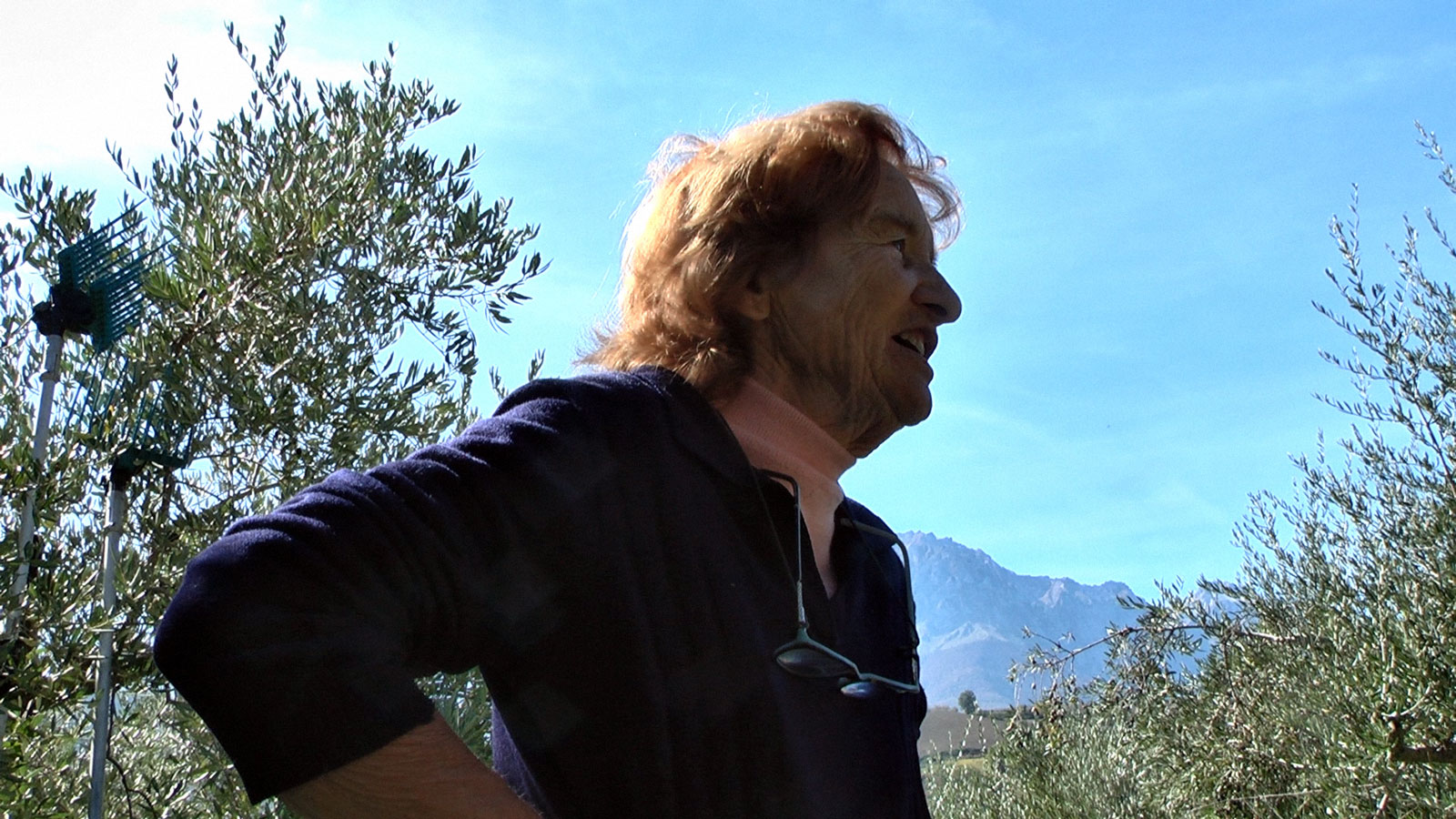

The leafy branch that remains
Adele Di Marcoberardino sings
Photo by Marta Iannetti,
Arsita (TE), October 19, 2017,
Don Nicola Jobbi/Bambun Study Centre Archive.
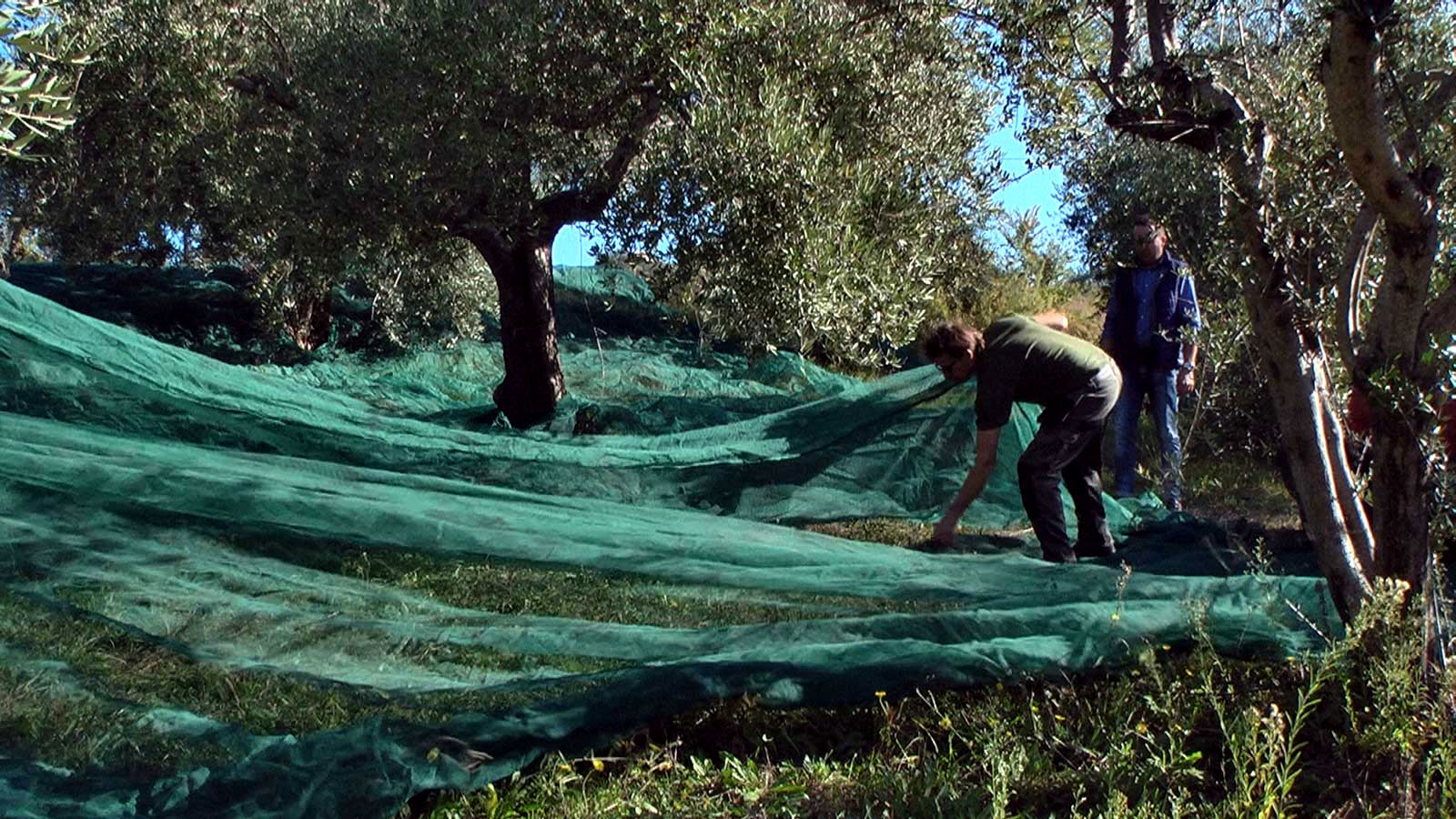
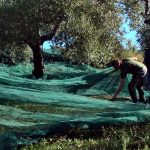
The leafy branch that remains
Networks and Collection
Photo by Marta Iannetti,
Arsita (TE), October 19, 2017,
Don Nicola Jobbi/Bambun Study Centre Archive.
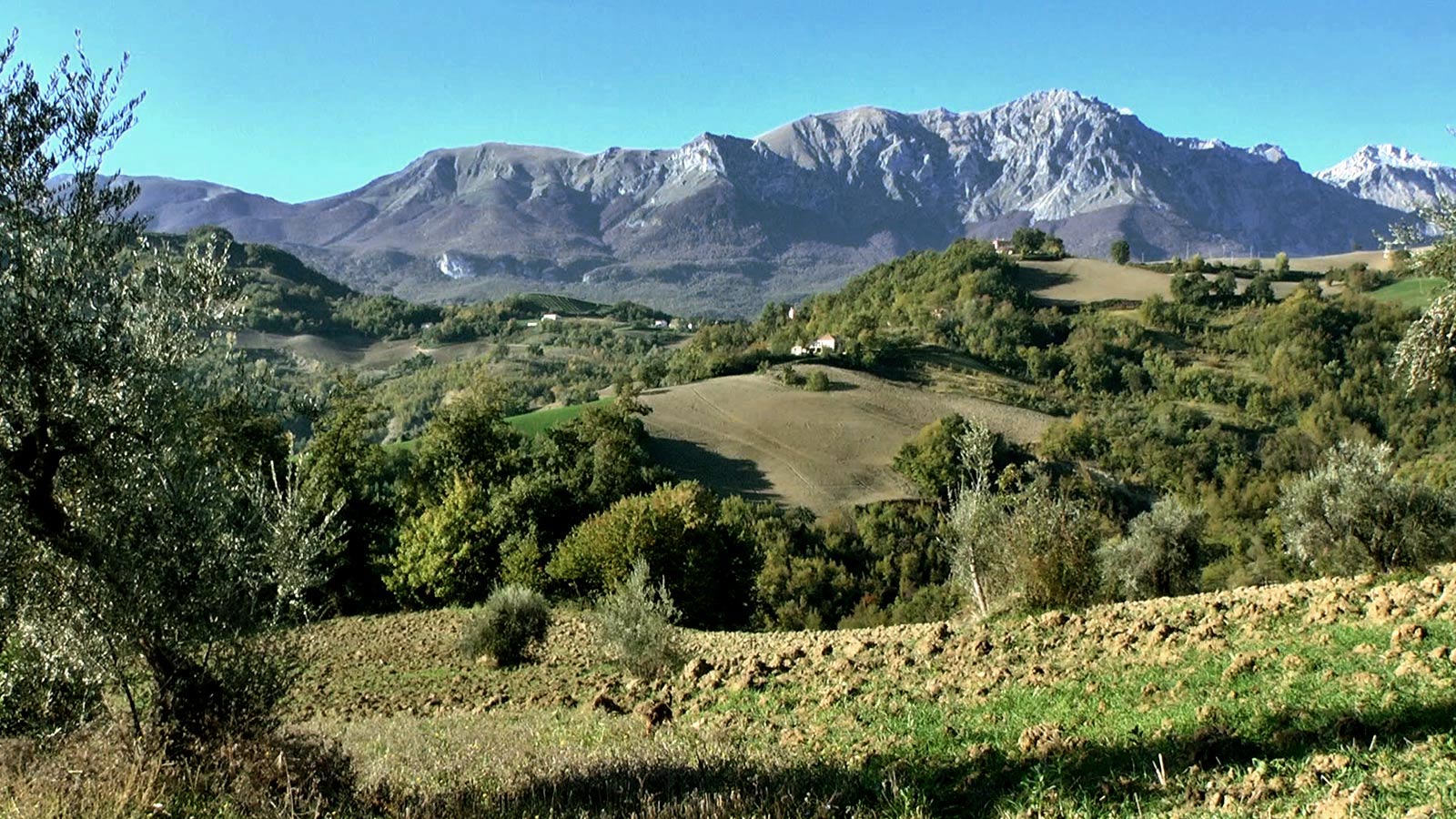

The leafy branch that remains
Olive Trees and Mountains
Photo by Marta Iannetti,
Arsita (TE), October 19, 2017,
Don Nicola Jobbi/Bambun Study Centre Archive.
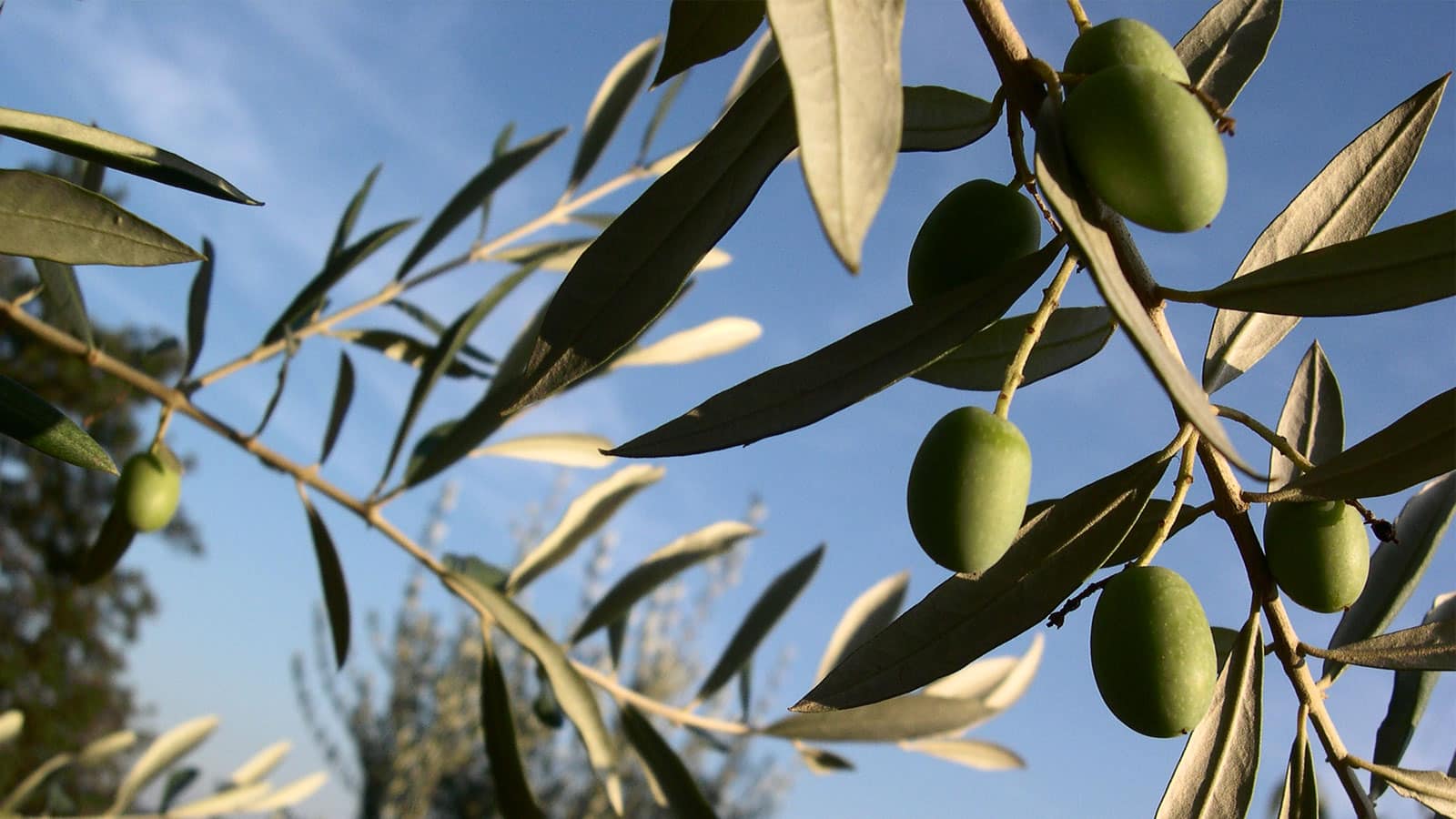
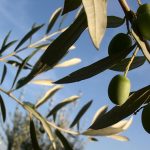
The leafy branch that remains
Olives, leaves and branches
Photo by Stefano Saverioni,
Arsita (TE), October 19, 2017,
Don Nicola Jobbi/Bambun Study Centre Archive.
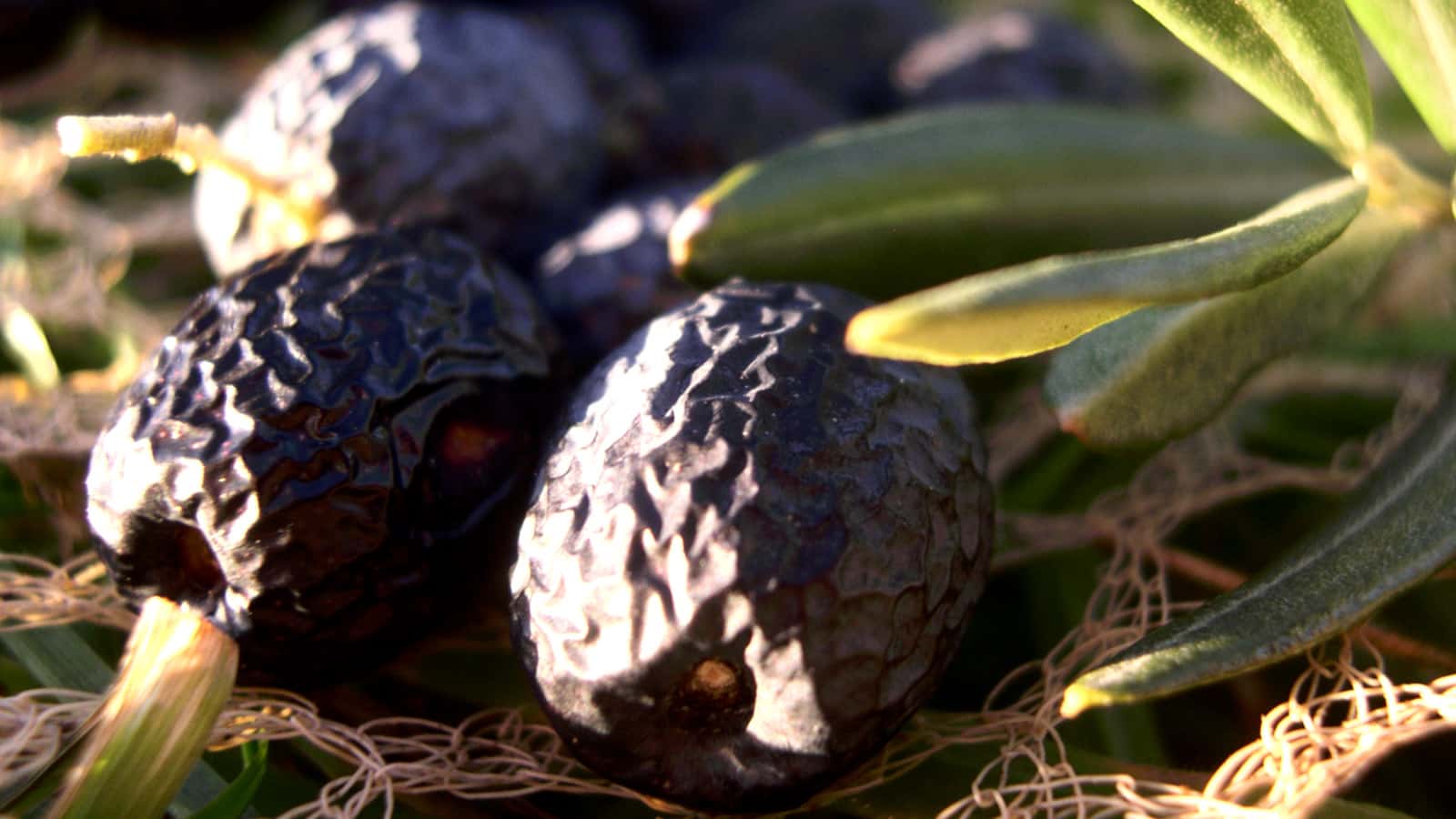
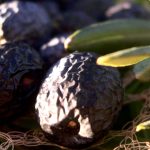
The leafy branch that remains
Olives
Photo by Stefano Saverioni,
Arsita (TE), October 19, 2017,
Don Nicola Jobbi/Bambun Study Centre Archive.
Watch the video
The olive harvest
Arsita (TE), October 19, 2017.Footage by Marta Iannetti, Don Nicola Jobbi/Bambun Study Centre Archive .
Cultural transmission and protection
In the context of sharecropping agriculture that characterized the territory of Arsita in the past, olive growing was a complement to the main activities of livestock breeding and cereal cultivation, assuming a secondary function that favoured the spread of extensive irregular groves , mixed in with the field crops such as hay and grains or sometimes even with the vineyards. Currently farmers tend to prefer specialised olive groves, because in this way it is easier to harvest the olives and prepare the land, while fields without trees allow the use of agricultural machinery.
Although there are now many abandoned olive groves in the local countryside, olive growing continues to be very present and widely practiced because it is not too challenging and can provide such a valuable product; oil which is indispensable for the kitchen and for food storage during the winter season. However, the production chain that involved the harvest of the olives and the subsequent pressing has partially declined, with the disappearance of many mills driven by animals, mostly horses or donkeys, which existed in Arsita until the 1950s, while mills converted for use with electric motors in the neighbouring territory of Bisenti are the ones that still remain.
Even though the olive pickers no longer sing in the trees and the noise of the pneumatic harvesters has supplanted the songs and influenced the soundscape of the harvest, the persistence of olive growing for household consumption, is still a form of resistance based on the idea of domestic production, and extra-virgin olive oil, the only vegetable oil obtained from fruits rather than seeds, continues to play an important and central role in the life of families from Arsita.
The product of the harvest, this “green gold” , as Enzo Fioravante calls it, is also the tangible sign of a renewed family bond, handed down through the generations: the olive trees were planted by the grandfathers and passed down to the children and grandchildren, along with their fruit.
